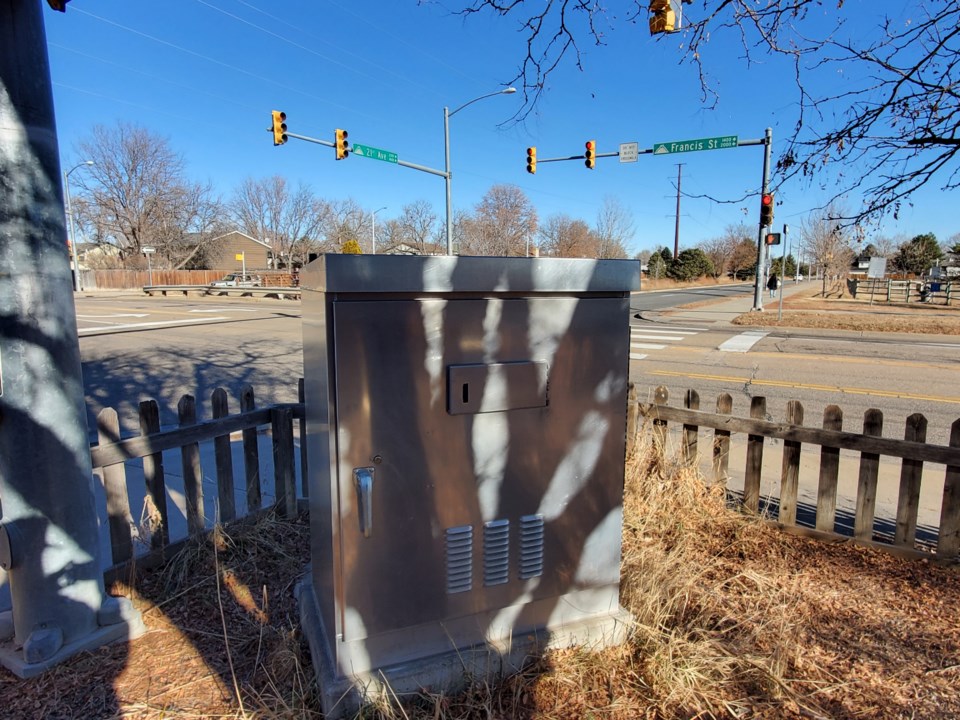Historical Longmont photos, meticulously curated from the archives of the Longmont Museum and Times-Call acquisition, are destined to decorate select traffic cabinets at stoplights across the town in 2024.
Choosing photo compositions that translate well in this format is part of the learning curve for Art in Public Places, or AIPP, overseen by Administrator Angela Brill. The initial installation of around six cabinets will be evaluated for future enhancements throughout the year.
Longmont’s 1% for the arts program is enshrined within the city code, dictating that one percent of the construction cost for city infrastructure projects — whether it’s for bridges, streets, libraries or city buildings — is allocated to a dedicated fund specifically intended to support artistic initiatives.
“The funds aren’t tied to the location from whence they came,” Brill noted. “For instance, if a project like the library or road construction contributes to the fund, the art isn’t restricted to that specific site. Instead, a commission of 15 individuals, appointed by the city council, prioritizes projects and determines their execution.”
Since its inception in 1987, the AIPP program has cultivated a 35-year culture — an art collection that encapsulates multiple decades of artistic endeavors. Maintenance plays a pivotal role in preserving artworks, especially for pieces that have aged 20 or 30 years.
“COVID disrupted several of our initiatives, necessitating, revisiting and refreshing ongoing projects that needed attention. Maintenance, though not always glamorous, remains vital for artwork in public spaces,” Brill said.
AIPP commissioners take on the duty of adopting specific artworks and conducting routine inspections. These assessments play a pivotal role in determining the priority for maintenance projects.
As Longmont prepares to merge history within its bustling streets through this unique art installation, Brill and the AIPP team remain dedicated to preserving the town’s artistic works while embracing new opportunities for cultural enrichment.
The forthcoming traffic cabinet installations mark a step toward celebrating Longmont’s heritage, rendering the town’s public spaces not just functional but also visually captivating archives of its history.
In response to community feedback and the desire to expand public art offerings, collaborating with the Longmont Museum, AIPP acquired the Times-Call historic archive, integrating it into the museum collection and making thousands of historic photos accessible through the museum’s website.
“If you go to the museum website, you can access those historic photos,” Brill explained enthusiastically. “There’s like 5,000, and they’re all available. The commission decided to explore these archives, identifying a series of photos to feature on vinyl wraps on traffic cabinets at different intersections across town.”
Each traffic intersection has a cabinet housing the operational components for the traffic lights. These stainless-steel cabinets are the canvases for their upcoming project. The initial phase of the project will see approximately six traffic cabinets adorned with historic photo vinyl wraps, with plans to expand to 20 to 25 in the coming months.
“We’re taking high-resolution historical photos from our collection and transferring them into vinyl wraps … These wraps will cover these cabinets, essentially turning them into historical photo displays at these intersections,” Brill said. “We’re working with our friends in the traffic department to make sure they don’t look super distracting or confuse drivers.”
As Longmont gears up to integrate its history into the structure of everyday life, the AIPP’s innovative approach promises not just visual enhancement but also a connection to the town’s vibrant past for all to appreciate and enjoy.
Brill highlighted their uniqueness in genuinely engaging with the community. She detailed a rigorous and transparent artist selection process that involves open selection panel procedures accessible to the public.
“We conduct calls for artists through social media, our website and email lists for projects ranging from shock art to sculpture installations and art on loan,” Brill said. “These calls typically involve a request for qualifications, allowing artists to showcase their expertise specific to the project.”



